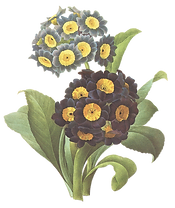Getting to the Root of the Matter
- Cynthia Thomas
- May 7, 2019
- 4 min read

They say a ‘watched’ pot takes longer to boil and I guess the same could be said of a watched seedling. Many a May I have found myself getting impatient for the garden to get going. Like the hunger that must certainly drive the cooking analogy, I am hungry to see what my seeds will become.
I’m especially anxious this year because I’m trying something different. Well, kind of. I’m growing sugar snap peas – those wonderful edible pods that thrive in cool weather – only I’m going purple. At least, that’s what the “Sugar Magnolia” package says.
I planted the big round seeds on March 25th and they had barely sprouted three weeks later when we left for Florida. So you can imagine my delight to see my sprouts stretching up a good 8” upon our return. While I know the seed must spend as much time developing roots as it does the portion above the ground, the beauty of planting a seed instead of a potted plant is that all this underground activity will pay off for your plant’s ability to uptake water and nutrients, withstand dry periods and pests, and help one another.
Have you ever pulled out a store-bought plant at the end of the season only to find that the roots never really extended beyond the size of the original container they were started in? That’s a prime example of the importance of this “hidden” part of the growth cycle. Just like the parable of the sower and the soils, the “ground” plays a major role in the success of the seed. (Matthew 13, Mark 4 & Luke 8)
What’s even more fascinating is that now scientist have evidence that a plant’s roots are part of a whole connected ecosystem under the ground and that plants communicate with one another.
While it used to be thought to be outrageous – in the 1980s it was suggested that trees send out electrical pulses, called W-waves, when their neighbors were chopped down. However, in recent years, fresh evidence has emerged that plants are constantly sending and receiving signals that scientists are now discovering. As well as canopy shyness and aggression (dictating how narrow/wide a plant will extend horizontally), plants warn their neighbors of impending aphid attacks via thread-like filaments of fungi that connect roots in complex communication networks and are able to detect whether they are surrounded by “strangers” or their own kind.
Isn’t that amazing? Perhaps the movie Avatar and the depiction of organisms all connected by an electromagnetic link is not as science-fiction as we thought. According to Nic Fleming in an article “Plants Talk to Each Other Using an Internet of Fungus,” these thin threads, known as a mycelium, act as a kind of underground “wood wide web”, linking the roots of different plants. He explains in great detail the studies that have been done to prove this theory in the BBC article here.
So you see, it’s not just dirt. No more than our heart is just a beating organ. The connections that we don’t see are every bit as important as those that we do. Like the seed that must contend with the soil it is placed in, Jesus said there is a force at work in our hearts to germinate, grow and produce faith from the seed of God’s word.
Do you sometimes feel as though your faith isn’t growing fast enough? Or perhaps, that of someone else’s?
There’s really no way to know what connections are taking place in another’s heart – whether they seem like they are completely disinterested in God or whether they are the Pope himself. But there is a way for us to help amend the soil by staying connected, by praying and encouraging the growth of nearby ‘roots’, and by sending messages of warning when attacks are nearby.
In an article, “What Plants Talk About,” a documentary from the PBS show NATURE, James Cahill, an environmental plant ecologist at the University of Alberta, explains ways that plants don’t just talk to one another, but that through the use of chemicals they communicate with insects as well. He says that literally plants can call for help:
“When you inhale the sweet smell of freshly mown grass or cut flowers, what you’re actually smelling is the plant’s distress call. It’s the plant's way of crying out for help, Cahill says. The scent attracts insects that will eat the pests currently munching on their plant-bodies. For instance, the wild tobacco plant can identify a hornworm caterpillar by its saliva. When attacked by this caterpillar, the tobacco plant emits a chemical signal that appeals to the insect’s enemies. Within hours, caterpillar predators like the big-eyed bug show up, ideally driving the pest away.”
If plants count on eachother to thrive in the environment they’re placed, shouldn’t we do the same?

_________________________________________
I couldn’t pass up another one of these beautifully rendered seeds packets from Hudson Valley Seed Company. In a brilliant stroke of PR, they feature local artist’s renditions of their plants on the cover of the packets. (I’m looking for a cool way to display these packets – if you have any ideas…)
Hope to send pictures of my purply pods soon. In the meantime, let’s take a hint from our green (and purple) friends and nurture the connectedness of all those the Lord puts us in proximity to.























Comments